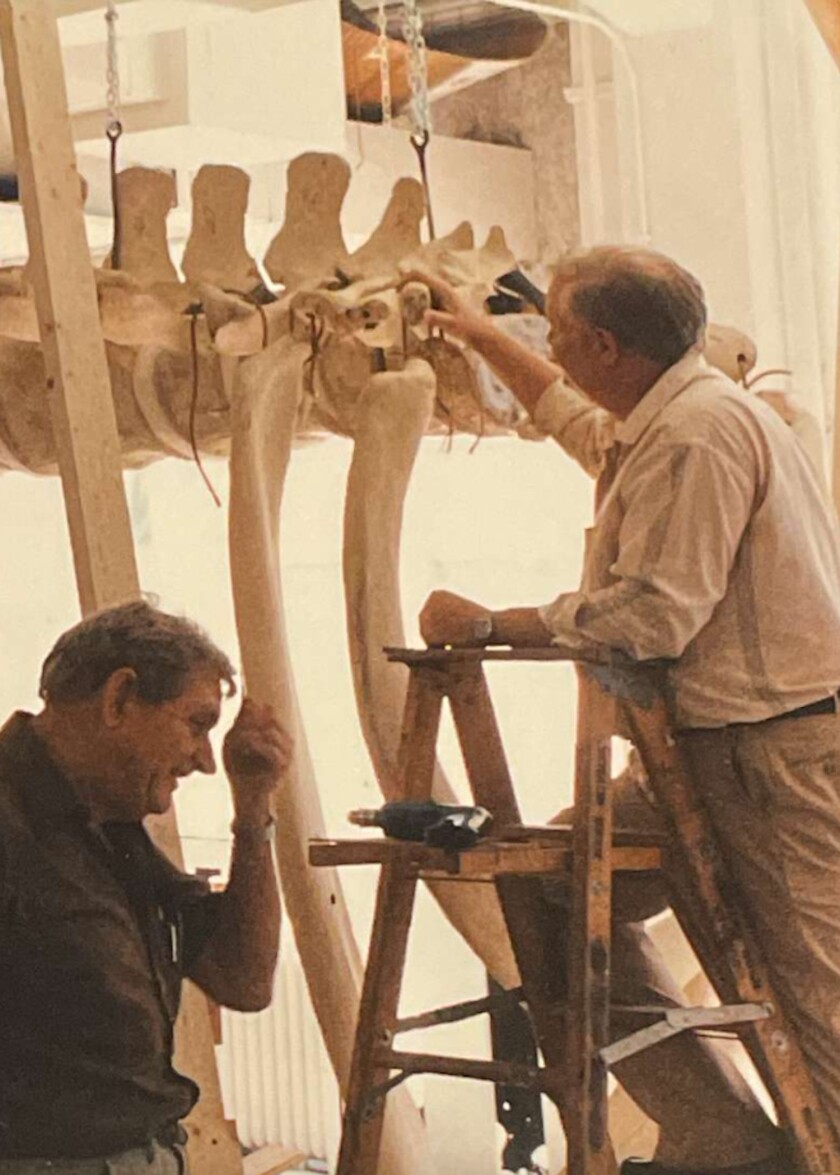When Curt Tice helped his children with their school projects — including a Viking ship, a scale model of an oil refinery and a 3-foot-long Jurassic Age dragonfly – they were so astoundingly detailed that their teachers sometimes wound up keeping them.
An architectural model-maker, Mr. Tice worked on restorations of the coal mine at the Museum of Science and Industry and its 13-foot-high walk-through model of a beating human heart that enthralled generations of schoolchildren.
The longtime Palatine resident died in his sleep Dec. 13 at Prairie Hills assisted living facility in Independence, Iowa. He was 83.
“He could fix anything. He could make anything,” said his daughter Dawn Magliola.
Mr. Tice sculpted the Beatles statues at Chicago’s Rock ’n’ Roll McDonald’s. He worked on full-scale whale and dinosaur replicas for museums. And he installed a “coral reef” at Epcot and the Shedd Aquarium.
Mr. Tice also helped make a model of the Great Mosque of Mecca for the 1982 World’s Fair in Knoxville, Tennessee.
To build medical exhibits and transparent mannequins to show the inner workings of the human body, he studied anatomy books. His daughter Dorothy Loutfi said her late husband, Hassan, a cardiologist, “told me my father’s knowledge of anatomy was incredible.”
For a railway in his garden, he researched Civil War bridges built by the Army Corps of Engineers.
When he was born at home in Edmundston, New Brunswick, Canada, in 1937, the attending doctor arrived by sleigh. His house had a door on the second floor so the family could get out when snowdrifts were high, his children said.
Young Curt spent most of his childhood in Des Plaines, where he’d play with his Irish setter, Flame, according to his daughter Dorothy. “He talked about his dog racing in the river and bringing back snakes for my grandmother as gifts,” said his son Dan.
He played the euphonium in the band at Maine Township High School and worked at Ray Kroc’s first McDonald’s restaurant in Des Plaines. Later, he studied architecture at the old Navy Pier campus of the University of Illinois and industrial design and sculpture at the School of the Art Institute.
In his early 20s, he fell in love at first sight when he met his wife, Gail, at a party. They married in 1961.
Their children remember how he glowed when she performed Chopin’s “Raindrop Prelude” on the piano. “The look of pride on his face — he was really moved every time she played,” said his daughter Dorothy.
Almost half a century after they married, he said in a letter: “I think we are more in love now than we ever were.”
From 1961 to 1965, he worked at Chicago’s Richard Rush Studio, a renowned model maker and the official manufacturer of Smokey Bear costumes.
The hours were long — so long, that one day Mr. Tice arrived home and heard his 3-year-old daughter Dawn say: “Mommy, there’s a strange man in the house.”
Though he enjoyed working for Richard Rush, he resigned the next day. He took a job at another model-making firm that gave him more time with his family.
Years later, he returned to work for Rush Studio in a job with more control over his schedule.
Mr. Tice made house calls for Sears, repairing furniture that had been scratched during deliveries. And he did set design for Cutting Hall Performing Arts Center and worked to preserve that Palatine theater.
He enjoyed helping his kids with homework dioramas, teaching them to make tiny trees out of twisted wire and flocking.
“Mine was an A-frame house with plexiglass windows,” said Dawn Magliola.
“I did a scale model of an oil refinery,” said Dorothy Loutfi.
“I did a 3-foot dragonfly from the Jurassic Age, spot-welded together,” Dan Tice said.
To transport his heavy tools, he had air shocks installed on his mint-green Delta 88 Oldsmobile.
Occasional modeling mishaps cost him a number of fingernails and a fingertip, provoking exclamations of “For crying out loud” — and sometimes, something stronger — from his workshop.
Mr. Tice liked the music of Leon Redbone and the TV show “Perry Mason.” He read science fiction and made Pinewood Derby cars for his grandchildren. He loved decorating for Christmas while listening to jazzy Swingle Singers albums.
When he enjoyed an experience or event, he’d say: “That was neat!”
His wife died in 2012. In addition to his daughters Dawn and Dorothy and son Dan, Mr. Tice is survived by his sister, Sharon Gregg, and eight grandchildren. Services have been held.
His children say they think of him whenever they smell turpentine, fresh-cut wood or adhesive spray.







